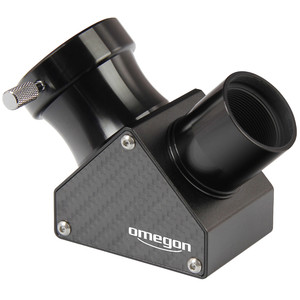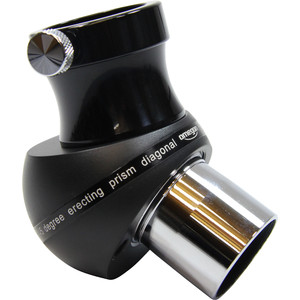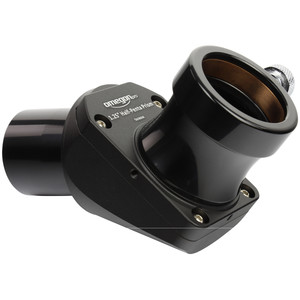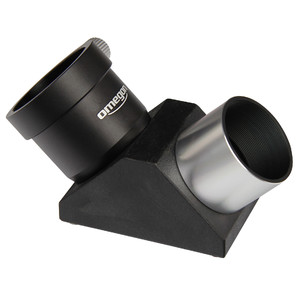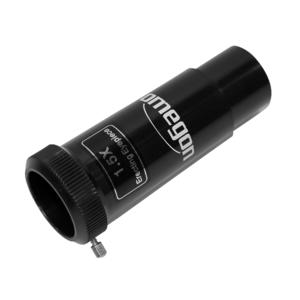Zenith mirrors and erecting optics
In order to be able to comfortably observe with a refractor or Schmidt-Cassegrain telescope, you need a zenith mirror or an Amici prism.

When you look at the sky with a refractor or Schmidt-Cassegrain telescope, the focuser is pointing downwards. To avoid contorting yourself or kneeling on the floor while observing, you use a diagonal mirror or Amici prism. The result: a light path deflected upwards through 90° provides a comfortable viewing position.
Difference between a prism and a mirror
The prism has a triangular shape, like a house roof. This house roof is positioned at 45° in such a way that the surfaces stand in the light path. When a beam of light hits the surface, it is deflected by 90° and enters the eyepiece.
A diagonal mirror works in a similar way. It consists just of a mirror, which is set in the housing at exactly 45°. Thus, star diagonals and diagonal mirrors have the same effect.
Advantages and disadvantages at a glance:
- · The light path in the prism is slightly longer
- · Inferior prisms can tend to cause chromatic aberration
- · It is important for diagonal mirrors that they are highly reflective
Upside down without a zenith mirror
Anyone who has once looked through a refractor without a prism will have noticed something:
The refractor delivers an upside-down image. Only by using a prism or mirror will the object be upright.
If you want to find your way around the sky, reversed images can be confusing. You can find yourself slewing the telescope in the opposite direction to that which you intended. But with a little practice, this is no longer a problem.
Image orientation with different telescopes
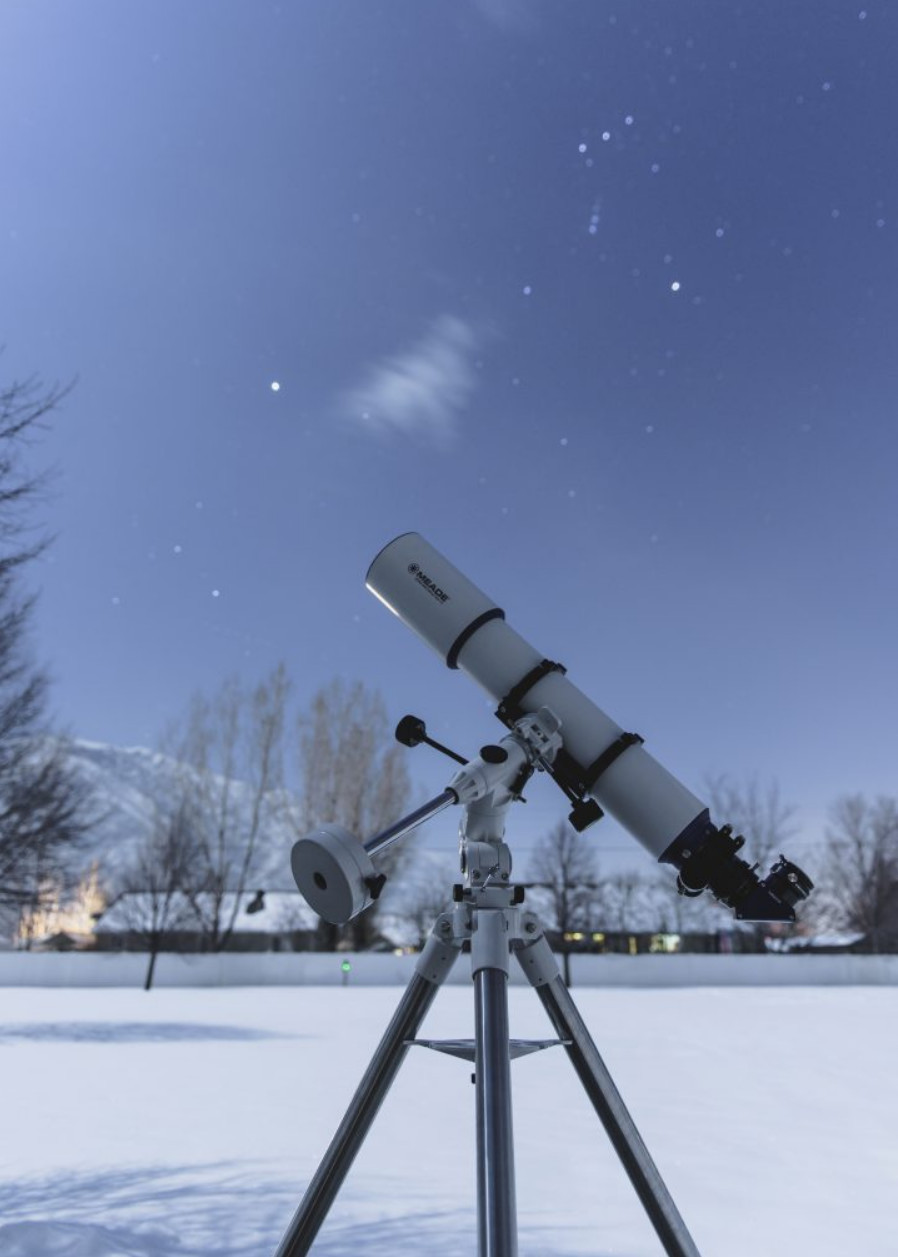
Refractor with straight view without zenith mirror
- Image is upside down
Refractor with 45° Amici prism
- Image is upright and right-sided
Refractor with 90° zenith mirror
- Image is upright but laterally reversed
Newtonian telescope
- Image is upside down (no diagonal prism possible)
Newtonian telescope with erecting lens
- Image is upright and right-sided
Schmidt-Cassegrain and Maksutov-Cassegrain telescope
- Image is upside down
Schmidt-Cassegrain and Maksutov-Cassegrain with 90° zenith mirror
- Image is upright but laterally reversed
The erecting lens
An erecting lens has a similar effect to an Amici prism. It, too, turns an upside-down image the right way up, so that an astronomical telescope can also be used for terrestrial observation. This lens is often not a single lens, but a system of multiple lenses. (They usually consist of four lenses, two pairs of two lenses cemented together. The cemented systems consist of, for example, a plano-concave and a convex lens. The two systems together thus result in two achromatic lenses.) Pre-determined spacing means that these lenses usually have a magnification of 1.5 times, in addition to correcting the image. Here, the worst chromatic aberration has already been corrected.
However, this erecting system is only a compromise. The aspect ratio often changes in an adverse way. In addition, the lenses are not usually coated, so light loss is to be expected. However, there are also high-quality systems with fully coated lenses available, whose optical quality is good.
Recommended erecting optics

